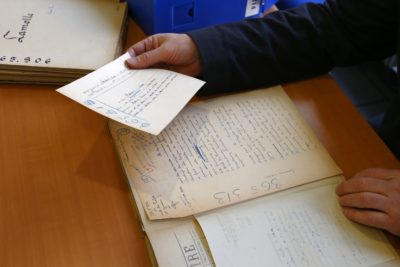PAID

Why Study Cultural Crime? A Question and Answer Session Introducing ARCA’s Postgraduate Training Programmes

Looting and Illicit Trafficking of Antiquities in the Middle East and North Africa: Understanding the Minds and Motives of Looters, Traffickers and Dealers and Other Supply Chain Actors – v3

In sunlight or in shadow: The Modern Plague of Art and Antiquities Thefts – 3rd Edition

نهب الآثار والاتجار غير المشروع بها في منطقة الشرق الأوسط وشمال أفريقيا: التعرف على عقلية ودوافع اللصوص و المهربين المتَّجرين والتجار وباقي الفاعلين في سلسلة توريد الآثار 2

نهب الآثار والاتجار غير المشروع بها في منطقة الشرق الأوسط وشمال أفريقيا: التعرف على عقلية ودوافع اللصوص و المهربين المتَّجرين والتجار وباقي الفاعلين في سلسلة توريد الآثار

Fakes and Forgeries: Understanding the Minds, Methods and Motives of Master Forgers – 3rd Edition

In sunlight or in shadow: The Modern Plague of Art and Antiquities Thefts – 2nd Edition

Repatriation – beyond litigation – 2nd Edition

Museums and heritage sites in the 21st Century: what is their role? 2nd Edition

Criminals without Borders: Treating artefacts as commodities

The Fine Art of Fine Art Insurance

L’imperatore dei ladri: Napoleone e il saccheggio del Patrimonio Artistico italiano

The emperor of thieves: Napoleon and the pillage of the Italian artistic heritage

Fakes and Forgeries: Understanding the Minds, Methods and Motives of Master Forgers – 2nd Edition

Provenance research in a (post?)-pandemic world

Nazi cultural thefts in Europe, 1933-1945

Art, crime and criminology: how to analyse cultural heritage crime empirically
COURSE DESCRIPTION
Lorem Ipsum is simply dummy text of the printing and typesetting industry. Lorem Ipsum has been the industry’s standard dummy text ever since the 1500s, when an unknown printer took a galley of type and scrambled it to make a type specimen book. It has survived not only five centuries, but also the leap into electronic typesetting, remaining essentially unchanged.
CERTIFICATION
Lorem Ipsum is simply dummy text of the printing and typesetting industry. Lorem Ipsum has been the industry’s standard dummy text ever since the 1500s, when an unknown printer took a galley of type and scrambled it to make a type specimen book. It has survived not only five centuries, but also the leap into electronic typesetting, remaining essentially unchanged.
LEARNING OUTCOMES
- Over 37 lectures and 55.5 hours of content!
- Testing Training Included.
- Learn Software Testing and Automation basics from a professional trainer from your own desk.
- Information packed practical training starting from basics to advanced testing techniques.
- Best suitable for beginners to advanced level users and who learn faster when demonstrated.
- Course content designed by considering current software testing technology and the job market.
- Practical assignments at the end of every session.
- Practical learning experience with live project work and examples
 Keny White
Keny White
Professor
Keny White is Professor of the Department of Computer Science at Boston University, where he has been since 2004. He also currently serves as Chief Scientist of Guavus, Inc. During 2003-2004 he was a Visiting Associate Professor at the Laboratoire d’Infomatique de Paris VI (LIP6). He received a B.S. from Cornell University in 1992, and an M.S. from the State University of New York at Buffalo.
